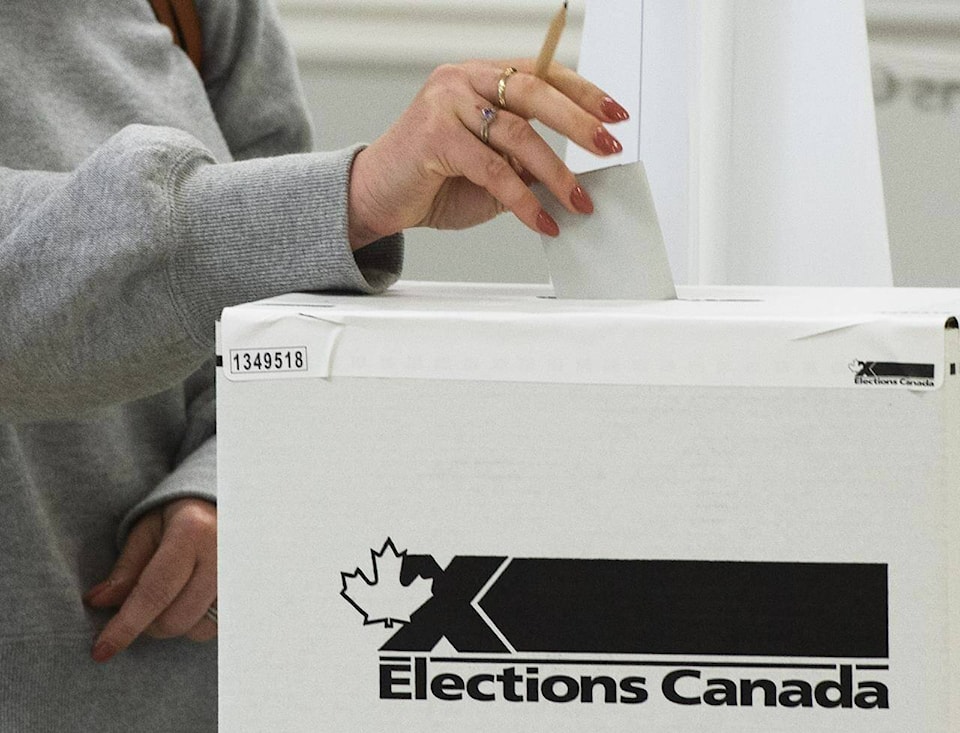OTTAWA — The Canadian Press is projecting that the Liberal party will win the most seats in the 2021 federal election, giving them the best chance to form the next government.
It is not yet clear whether Prime Minister Justin Trudeau will win a majority or need the support of at least one other party to remain in power with a minority government.
The Canadian Press projects that the Liberals are leading in 148 ridings, the Conservatives in 103, the Bloc Québécois in 28 and the NDP in 22.
The Liberals enjoyed a healthy lead Monday night as early poll results started trickling in across the country.
The party’s share of the vote in the two most populous provinces, Ontario and Quebec, was well ahead of what polls heading into the election had forecast.
The Grits were hanging onto their commanding position in Atlantic Canada, where the Conservatives made modest gains.
The NDP lost its lone Atlantic seat, St. John’s East, to the Liberals. It had been held by New Democrat Jack Harris, who did not seek re-election.
Trudeau cabinet ministers Seamus O’Regan, Dominic LeBlanc and Lawrence MacAulay cruised to victory.
But Bernadette Jordan, who served as fisheries minister, lost to her Conservative rival in Nova Scotia’s South Shore-St. Margarets, evidently hurt by the lobster fishery dispute between Indigenous and non-Indigenous fishers in the region.
In Fredericton, N.B., Jenica Atwin, the former Green MP who defected to the Liberals last spring, was in a tight, see-saw battle with the Conservatives.
Green support largely collapsed throughout the region.
Heading into Monday night, polls suggested a dead heat across Canada between the Liberals and Conservatives — neither of them within reach of the 170 seats needed to form a majority government.
Trudeau pulled the plug on his minority Liberal government on Aug. 15, a little less than two years after Canadians first reduced the Liberals to a minority.
He argued that Canada was at a pivotal moment in history and Canadians deserved a chance to decide how they wanted to finish the fight against COVID-19 and build back the shattered economy.
But the timing of his election call, coming as a fourth wave of the novel coronavirus was beginning to sweep the country, quickly sapped the good will Trudeau had built among Canadians for his government’s handling of the pandemic over the previous 18 months.
And it gave rival leaders an opening to attack Trudeau’s character, describing him as a selfish egoist who can’t be trusted to put the interests of Canadians ahead of his personal ambition to secure a majority.
At dissolution, the Liberals had 155 seats, the Conservatives 119, the Bloc Québécois 32, the NDP 24 and the Greens two. There were also five independents and one vacancy.
While another minority seemed likely, it was a toss-up heading into Monday night whether it would be a Liberal or Conservative minority.
Which of the two front-runners ultimately forms government doesn’t necessarily depend on who wins the greatest share of the popular vote or even who wins the most seats.
Rather, it depends on which party can muster enough support from one or more smaller parties to survive crucial confidence votes in the House of Commons.
Canadians may well have to wait until Wednesday to learn which party will form the government.
There are almost one million mail-in ballots that election officials won’t start counting until Tuesday. Elections Canada has said it expects to finish the mail-in count in most ridings by Wednesday, but some may take another day or two.
According to Elections Canada, almost 6.8 million people voted early, most of them at advance polls over a week ago, and the rest through special ballots cast by mail or at Elections Canada offices.
Canada has more than 30 million eligible voters.
Elections Canada had previously warned that the pandemic could lead to longer waits for voters compared to past elections. Public health protocols involve keeping people at a distance and collecting extra information for contact tracing purposes, which could take extra time.
The polling stations themselves were also likely to be farther away, as many schools and landlords opted out of hosting crowds of voters during the fourth wave of the pandemic.
Elections Canada encouraged voters to wear masks but only required them in places where they were mandated by provincial rules. Proof-of-vaccination regulations do not apply at polling stations in any province where they currently exist.
George Walker cast his ballot in Toronto Monday afternoon. He described the experience as “smooth,” and he called the safety precautions taken at the polling station “wise.”
“But it took longer than it has in the past, mainly because of COVID,” Walker said, adding he didn’t mind the extra 15-minute wait.
Shannon Fernandez said voting on election day was “super easy,” “stress free” and “very straightforward.”
“I felt like it was very well-organized,” Fernandez added. “No complaints at all.”
— The Canadian Press
